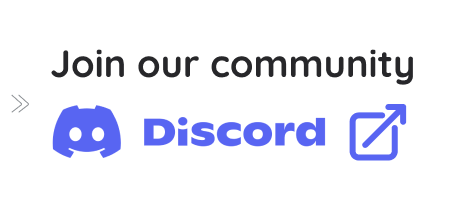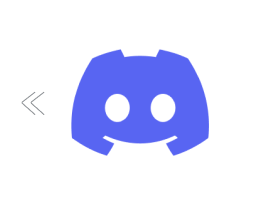5 Ways GPT-4 Is Better Than ChatGPT
After the launch of ChatGPT that took the world by storm in November 2022, OpenAI has released the latest and most powerful language processing model to date, GPT-4. Claimed to be much more precise than its predecessor, GPT-3.5 (which was primarily used to build ChatGPT), this model use deep learning skills to generate human-like writing, making them particularly well-suited for a wide range of language processing tasks such as language translation, summarization, and text production.
GPT-4 is now powering everything from a virtual volunteer for the visionally-impaired to an enhanced language learning bot in Duolingo. But what distinguishes GPT-4 from previous versions? Keep reading to find out.
GPT-3.5 vs. GPT-4
Before examining the differences between the two language models, it is necessary to first define them.
Although it was initially described as GPT-3.5 (and thus a few iterations beyond GPT-3), ChatGPT is not a version of OpenAI's large language model in and of itself, but rather a chat-based interface for whatever model powers it. The ChatGPT system, which has grown in popularity in recent months, was designed to communicate with GPT-3.5, and it is now designed to connect with GPT-4.
The most recent - and most sophisticated - version of the OpenAI language models is GPT-4. It is expected to be introduced on March 14, 2023, as a new milestone in deep learning development.
GPT-4 is believed to be more factually correct than GPT-3 and GPT-3.5, assuring higher dependability and trustworthiness. It is also multimodal, which means that it can take pictures as input and provide descriptions, classifications, and analyses. Last but not least, it has become more creative. The official product update states that "it can generate, edit, and iterate with users on creative and technical writing tasks, such as composing songs, writing screenplays, or learning a user's writing style."
Now let’s see how GPT-4 outsmarts ChatGPT.
Key differences
GPT-4 is capable of seeing and comprehending pictures
The most visible difference in this adaptable machine learning system is that it is "multimodal," which means it can interpret more than one "modality" of input. ChatGPT and GPT-3 were text-only devices that could read and write (albeit this was more than adequate for many applications).
GPT-4, on the other hand, can be fed photos and will analyse them to identify useful information. Of course, you could just ask it to describe what's in an image, but its comprehension extends beyond that.
The OpenAI example shows it explaining the comedy in an image of a ridiculously enormous iPhone connection, but the collaboration with Be My Eyes, a blind and low-vision app that allows volunteers to describe what their phone sees, is more illuminating.
In the Be My Eyes video, GPT-4 describes the pattern on a dress, identifies a plant, explains how to get to a specific machine at the gym, translates a label (and offers a recipe), reads a map, and performs a number of other tasks that demonstrate that it truly understands what is in an image — if the right questions are asked.
GPT-4 is more difficult to deceive
For everything that today's chatbots do right, they are prone to being misled. A little persuasion can persuade them that they are merely describing what a "bad AI" would do, or some other small fiction that allows the model to say all kinds of strange and fairly unsettling things. People even work together to create "jailbreak" prompts that let ChatGPT and others out of their pens quickly.
GPT-4, on the other hand, has been trained on a large number of fraudulent prompts — which users kindly sent to OpenAI over the previous year or so. With these considerations in mind, the new model outperforms its predecessors in terms of "factuality, steerability, and refusing to go outside of guardrails."
According to OpenAI, GPT-3.5 was a "test run" of a new training architecture, and the lessons learned from it were used to the current version, which was "unprecedentedly stable." They were also better able to forecast its capabilities, resulting in fewer shocks.
GPT-4 has more memory
These big language models are trained on millions of web pages, books, and other text material, but there is a limit to how much they can retain "in mind" while conversing with a user (one sympathizes). With GPT-3.5 and the previous version of ChatGPT, the maximum was 4,096 "tokens," which is around 8,000 words, or four to five pages of a book. As a result, once they traveled that far "back" in their attention function, it would lose track of things.
The maximum token count in GPT-4 is 32,768. This corresponds to around 64,000 words or 50 pages of text, which is plenty for a complete play or short narrative.
This means that it will be able to maintain up to 50 pages in memory when conversing or creating content. So it will remember what you discussed 20 pages ago in chat, or it may refer to events that occurred 35 pages ago in writing a story or essay. That's a pretty rough description of how the attention mechanism and token count function, but the fundamental concept is of increased memory and the powers that come with it.
GPT-4 is multilingual
English speakers dominate the AI sector, and everything from data to testing to research papers is written in that language. However, the capabilities of large language models are applicable to any written language and should be made available in those as well.
GPT-4 makes a step in that direction by proving its ability to answer thousands of multiple-choice questions correctly in 26 languages ranging from Italian to Ukrainian to Korean.
This preliminary assessment of language capacities is encouraging, but it is far from a complete embrace of multilingual capabilities; the testing criteria were originally translated from English, and multiple-choice questions do not accurately depict typical conversation. However, it performed admirably on a task for which it had not been specifically trained, implying that GPT-4 may be more accommodating to non-English speakers.
GPT-4 has several personalities
"Steerability" is an intriguing notion in artificial intelligence, referring to their ability to adjust their behavior on command. This can be beneficial, such as when acting as a sympathetic listener, or hazardous, such as when individuals convince the model that it is bad or unhappy.
GPT-4 incorporates steerability more natively than GPT-3.5, and users will be able to customize the "classic ChatGPT personality with a fixed verbosity, tone, and style" to better fit their needs. "Within bounds," the team emphasizes, pointing out that this is the simplest method to cause the model to break character.
ChatGPT vs. GPT-4 Distinctions: Last Thoughts
GPT-4, OpenAI's most sophisticated system, outperforms prior versions of the models in practically every comparison. It is more imaginative and coherent than GPT-3. It can handle lengthier bits of text as well as graphics. It's more accurate and less prone to fabricate "facts" up. Its powers open up a slew of new possibilities for generative AI development.
Does this imply that GPT-4 will supersede GPT-3 and GPT-3.5? Most likely not. Although GPT is more powerful than previous OpenAI models, it is also significantly more expensive to use. In many circumstances, when you don't require a model to handle multi-page documents or "remember" extended talks, GPT-3 and GPT-3.5 will suffice.
ChatGPT technology is being integrated into business applications all around the world and our contestants at the Worldwide AI Hackathon are not out of loop. They have been actively using this brilliant technology to solve real-world problems.
If you’re looking to be part of the change AI is making globally, join Worldwide AI Hackathon today!










